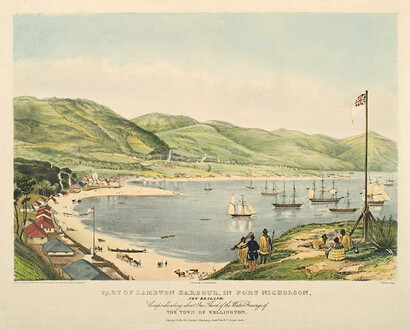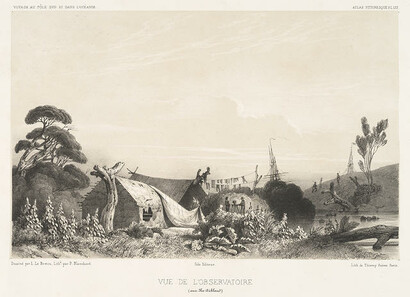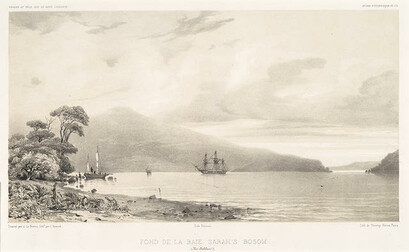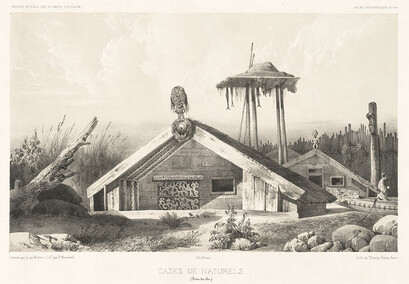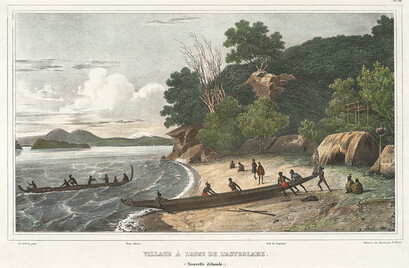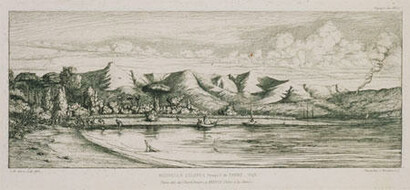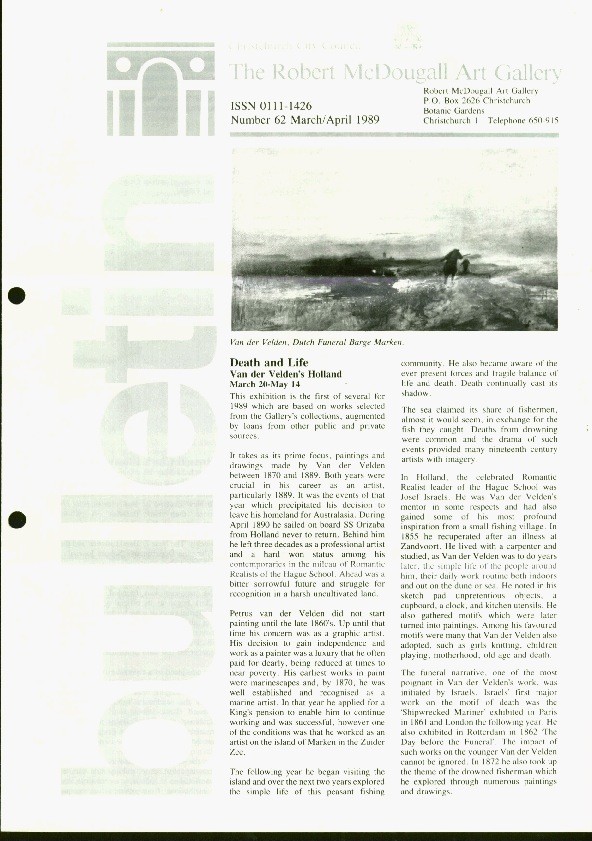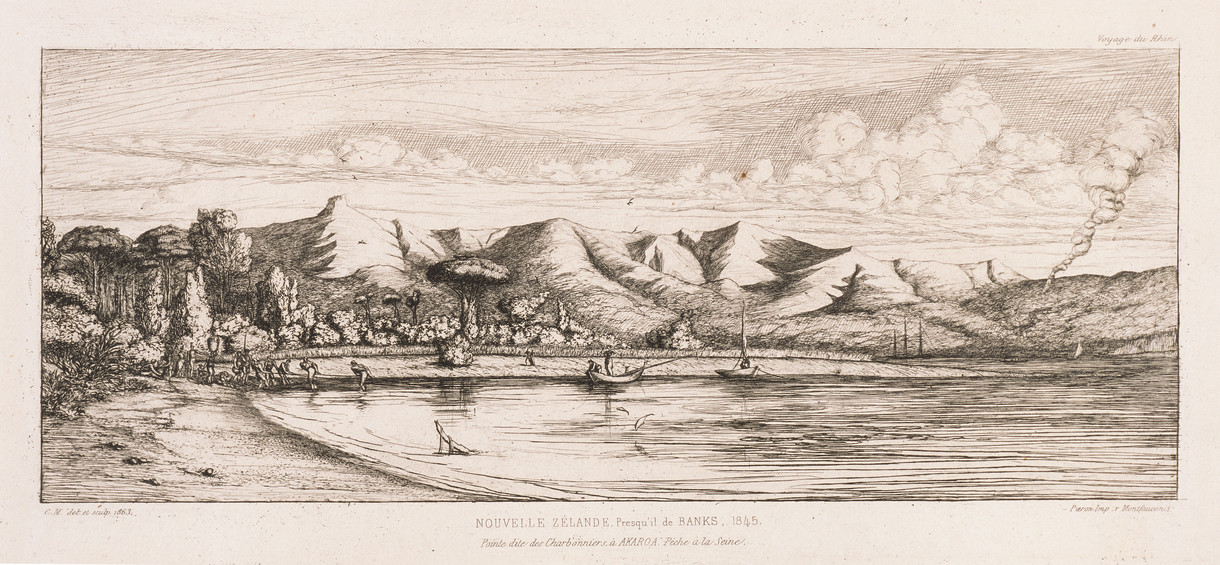This exhibition is now closed
Early New Zealand in Print
20 March –
14 May 1989
The New Zealand environment, its people, flora and fauna served as a source of imagery for a number of artists in the eighteenth and early nineteenth centuries especially those who sailed on voyages of exploration in the years prior to settlement. This exhibition comprises 25 published prints selected from the collections of the Gallery and the Canterbury Museum.
Most, with the exception of 5 plates, were not published by the artists concerned. Included are prints made after artists who travelled on voyages of exploration under either James Cook or Dumont d'Urville, or who were in New Zealand at the beginning of European settlement.
The artists on Cook's voyages, Sydney Parkinson, William Hodges and John Webber are all represented. Accounts of Cook's voyages followed each expedition, and these were copiously illustrated with plates engraved after works by the official artists. In the late eighteenth century many distinguished engravers were engaged to make these plates among them Richard Bernard Godfrey, James Basire and James Pouncy .
The prints published after the voyages of the corvette 'L'Astrolobe' under the command of Dumont d'Urville were made at a time when lithography in France was at its zenith. D'Urville made two voyages of exploration in the southern hemisphere. The first sailed from France in April 1826. On board were Barthélemy Lauvergne who recorded biological specimens and Louis Auguste de Sainson the expedition's official artist. The expedition spent more than two months studying and exploring the New Zealand coast which both Lauvergne and de Sainson recorded assiduously.
A second voyage followed in 1837 this time two vessels 'L'Astrolobe' and 'La Zelee' set out with a mission to explore down to the southern polar waters of the Pacific. During March, April and May of 1840, before returning to France, they visited New Zealand sailing up from the south and laying anchor for a time at the Auckland Islands. The artist on this voyage was Louis Le Breton.
The Voyages of d'Urville were published in two volumes following the explorer's return to France, but a third remained incomplete when he died with his family in a rail disaster in 1842. However the volume 'Voyage to the South Pole' was completed by the expedition's geographer.
Within this early period of New Zealand history, Charles Meryon emerges as the only artist to have made prints directly as a response to the New Zealand environs. The five Meryon prints included in this exhibition, though not issued until 1866, are unique images and have a special place in New Zealand's print history. Meryon was a cadet on the corvette 'L'Rhin' stationed in New Zealand from 1843 until 1845. During 1845 he spent several months at Akaroa where, in his spare time, he sketched the flora and natural land features of this part of Banks Peninsula.
Some six years earlier Charles Heaphy had worked in New Zealand for the first time as a draughtsman and three of his early watercolours were translated into lithographs by Thomas Allom for the New Zealand Company in England. These images are now perhaps amongst the better known of early New Zealand and have also been included in this exhibition.
('Early New Zealand in Print', Bulletin, No.62, March/April 1989, p.2)
Exhibition number: 426
